Does flour have a soul?
Let’s look at the Flour! Every day we come across a wide variety of food, both from animal and vegetable origin. We handle it, look at it, sometimes cook it, and eat it. Often, we...
Filter by Category
Filter by Author
Every day we come across a wide variety of food, both from animal and vegetable origin. We handle it, look at it, sometimes cook it, and eat it. Often, we have wondered what its appearance would be under a simple magnifying glass or at much greater magnification, for example employing an optical microscope or a scanning electron microscope.
In this short article, we will see how flour, a product of plant origin, appears and is used every day.
First, what is flour? When we use this term without introducing any further specification, we mean wheat flour obtained from the grinding of wheat grains. Behind this term, in reality, there are various types of flour, which are a result of grinding different kinds of wheat grains: durum wheat, soft wheat, spelt, etc. On the other hand, we specify which flour we intend to talk about when we come to rice, chestnuts, potatoes (potato starch), corn grinding.
There are many types of flour obtained from different plants all around the world. Some of these are particularly successful in the food sector and widely marketed. Others relegated to traditional uses in the cuisine of more or less defined geographical areas (Fig. 1).
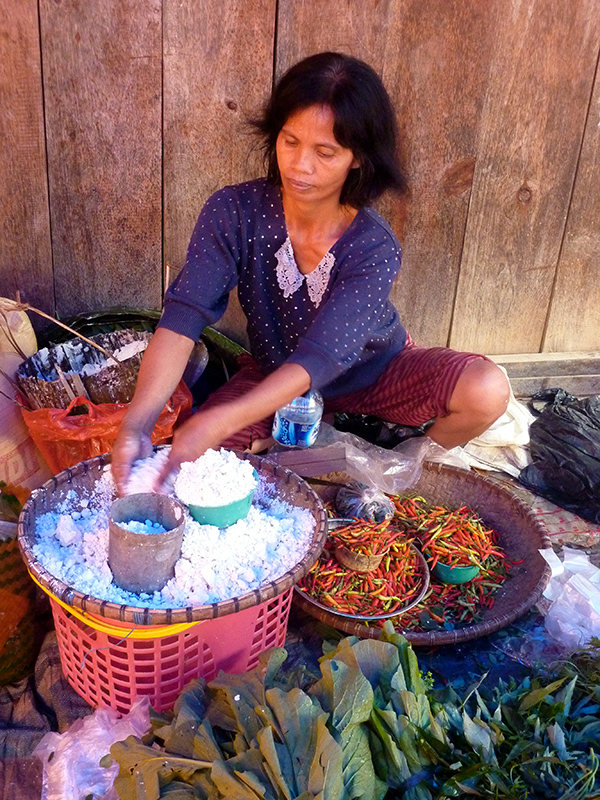
Parts of the plants, which are particularly rich in starch, are grounded to obtain the flour. Starch is the energy reserve par excellence of vegetables. Long molecules make starch up that, formed by polymerization of glucose, the sugar synthesized with the photosynthetic process starting from water and carbon dioxide, thanks to the energy supplied by sunlight. Plants store starch in the seeds to provide for the first energy needs of the new young plants when these have not yet developed the green parts where photosynthesis takes place. They also store it where photosynthesis is impossible because there is no light, such as in the central part of the stems or the underground portion of their body
At the cellular level, the starch of plants forms inside specific organelles that take the name of amyloplasts (also called leucoplasts, if we want to emphasize that they are white and not green like chloroplasts) (Fig. 2).
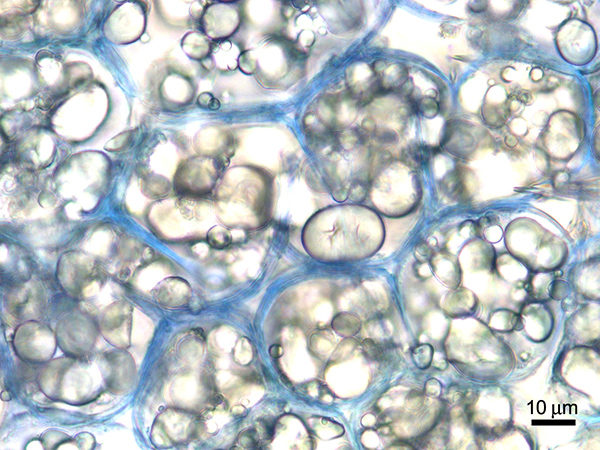
Starch is stored progressively around a hilum. The hilium can be point-like, linear, or branched, forming the starch granule that will grow to reach dimensions that can vary within the same plant, too. Furthermore, the shape of the starch grain can differ, from spherical to ellipsoidal, ovoid or polyhedral. We have starch granules formed originating from a single point called hilium (simple granule), and granules formed starting from an even large number of distinct hila (compound granules). The original structure of the starch granules modifies during the cooking process. The compound granules tend to disintegrate and give origin to types of flour that are easier and faster to digest. In fact, due to the granules disintegration, the surface digestive enzymes attack is considerably increased. An example is rice flour that people use in the diet of young children and that, as known, causes a rapid glycemic increase in those who eat rice, more notable than the increase observed in those who have to eat pasta made from wheat flour, which is composed of simple granules. The size and shape of the granules, with the morphology of the hilum, are significant characteristics for identifying from which plants the flour derives.
If we observe the flour under an optical microscope, the difference among the starch granules of the different types of flour becomes evident. We can see that wheat flour (Fig. 3) is composed of simple granules, lenticular in shape and with a central point-like, linear, or Y-shaped hilium, and a large number of small, ellipsoidal granules.
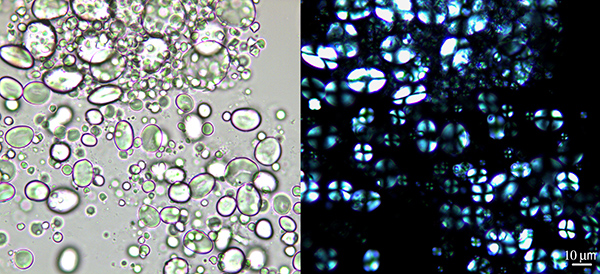
Potato flour (Fig. 4) is composed of oval granules or irregular yet still rounded, of variable dimensions, which can be even substantial. The hilum is point-like and eccentric. The granules have marked concentric streaks that are not – or hardly – noticeable in other varieties of flour.
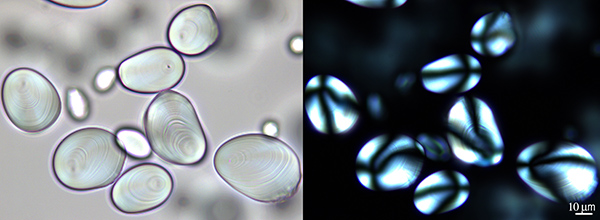
Small angular grains form rice flour (Fig. 5) with a central hilum united in very compact compound granules.
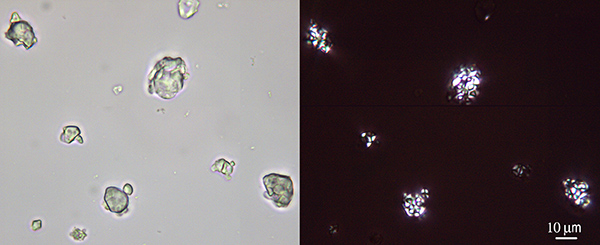
If not altered while cooking and damaged during the grinding, all flour granules have a particular feature when observed in polarized light (Fig. 3, 4, 5). The whole granule appears luminous and crossed by two dark lines that meet at the level of the hilum to form a more or less regular cross.
Under the scanning electron microscope, the starch granules (Fig. 6) appear smooth and with rounded profiles.
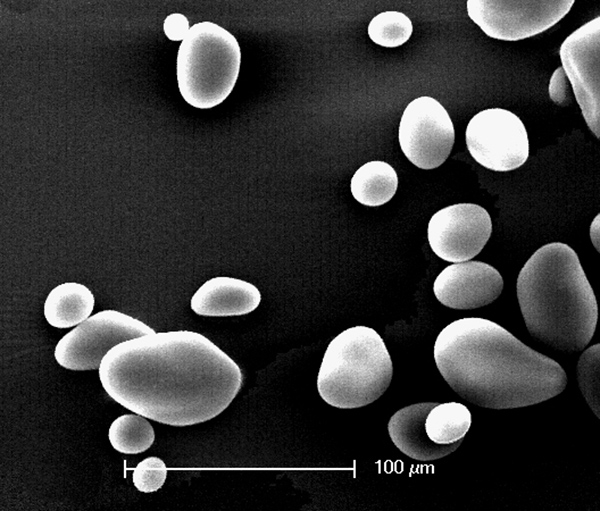
Men have produced flour since the Paleolithic, using spontaneous plants found in the environment.
The oldest flour we know dates back more than 30,000 years.
MARTA MARIOTTI LIPPI
Galactic gardens, eating among the stars, and space menus!!! Going of the moon to inhabit it, and from there, explore the deepest space, Mars, and other celestial bodies of the...
Discovering the educational and training activities of the Edmund Mach Foundation in San Michele all’Adige (TN) Excellence in the agricultural, food and environmental sectors. The...